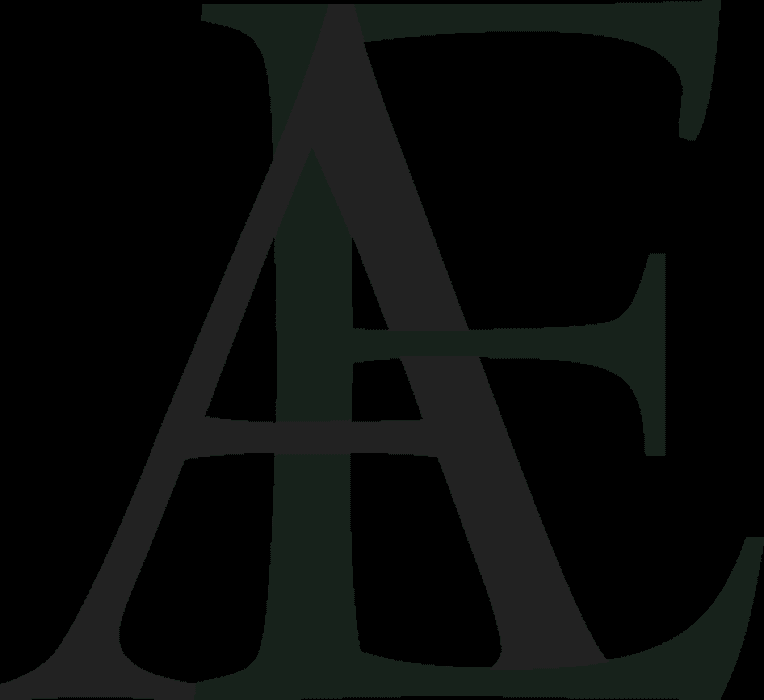Below you will find definitions for glass terms used throughout this site.
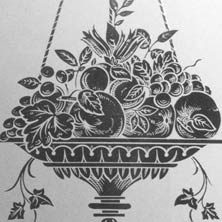 Acid Etched Glass
Acid Etched Glass
Acid etching is a chemical process used to create texture and designs in
glass panels by removing the top surface of specifically selected areas.
The process was often applied beautifully to clear plate glass or used
on variously-colored “flashed” glass to create dramatic
effects of depth and design. Victorian period acid etching was done by
coating glass with a resistant material such as paraffin, carving out the
design with a sharp instrument, and then dissolving the exposed glass areas
with hydrofluoric acid. This process was time consuming and needed to be
done with great caution.
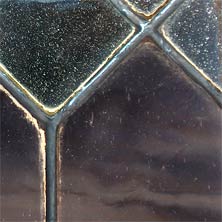 Antique Glass
Antique Glass
Mouth-blown sheet glass of the kind used in medieval church windows. At very
high prices, this variety of glass is still being made today. The colors
are crisp, and the interior variegations are desirable for their irregular
light refraction. Antique Glass is traditionally used in the best quality
church windows. In the United States it is used to produce distinctive,
but modern looking residential windows.
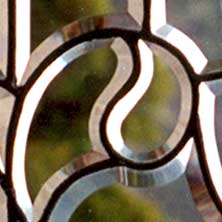 Beveled Glass
Beveled Glass
Beveled Glass is clear plate glass which has had all its edges ground and
polished at a specific angle. A Beveled Glass window is a mosaic of many
individual beveled glass pieces. The angled edges or bevels, cause transmitted
light to be prismatically refracted, often creating rainbow-like color
effects. During the 19th and early 20th century, all of the numerous and
time-consuming steps needed to create each beveled piece was done by hand.
Thus, Beveled Glass windows were expensive. In both transmitted and reflected
light conditions, an antique hand cut beveled window will produce elegant
and eye-catching visual displays.
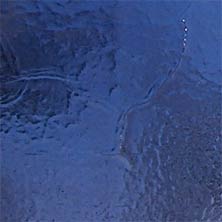 Cathedral Glass
Cathedral Glass
Machine made glass, mostly found in pale tints with textural effects. “Streaky” cathedral
glass exhibits swirls of various colors, and America’s early cathedral
glass (c.1860) has intriguing primitive irregularities. Cathedral glass has
no specific relationship to church windows.
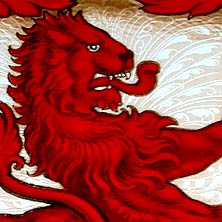 Flashed Glass
Flashed Glass
Glass that is made of a single type of base material (usually
clear or white) and an extremely thin layer of contrasting color “flashed” upon
one surface. While red on clear is the most common flashed glass, vivid blues,
greens and yellows were used in windows during the Victorian period. When
the flashed color is carved away through acid etching or wheel-cutting, remarkable
design affects were created in the contrasting colors.
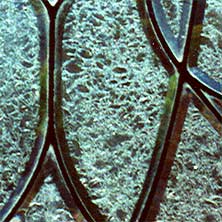 Glue-Chipped Glass
Glue-Chipped Glass
Clear, and infrequently, colored glass that has a frost like surface. It is produced by applying hot organic-based glue to the surface of previously etched glass. As the glue dries it shrinks, pulling chips of the glass surface away over many hours. The process is finished with some final scraping with specialized tools. For added glue-chipped texture the glass is reapplied with hot glue, and peeled back a second time. This is called double glue-chip.
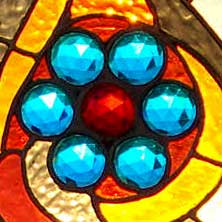 Jeweled Glass
Jeweled Glass
Jewels are added to the mosaic of a window as decorative enhancements. They
are were made in an amazing number of shapes, sizes, colors and textures.
Faceted jewels in old American windows were often completely hand cut and
polished in order to gleam like expensive Tiffany jewelry. Chunk jewels,
which appear as jagged, irregular and protruding "chunks,"
were individually made by striking thick glass with pointed glass hammers.
The largest category of jewels is that of the "pressed" variety.
Pressed jewels were made in molds out of translucent or opalescent glass,
shaped like a flower blossom, a polyhedron or any form in between.
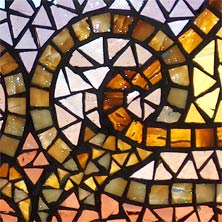 Mosaic
Windows
Mosaic
Windows
Medieval window makers often worked with small pieces of glass
for reasons of economy and availability. Glass was precious. During the nineteenth
century,
in grassroots movements on both sides of the Atlantic, glassworkers explored
new ways to replicate the early “mosaic” techniques. Overall,
the resulting mosaics (which is another name that stained glass windows are
called) were judged to be awkward, dark, and rather unpopular.
In the early 1880’s a company called Belcher Mosaic Glass made a breakthrough in stained glass assembly that allowed tiny pieces of glass to be “fastened” together without the use of lead came. Lead came is shaped like the letter “H” so the it can receive an individual piece of glass on either side of the “H's” crossbar. Thus, each piece of glass is encased in lead all around its perimeter. When all the cames are soldered together the window, or mosaic, has integrity as a panel. The problem with using small pieces, such as pieces under 3/4”, is that the lead came and solder come to restrict light passage, since a portion of each small pane is wrapped with lead.
Belcher Mosaic Glass Company devised a way to sandwich tiny pieces of glass (in very amazing patterns) between two sheets of heavy plate glass, then pour in a liquid amalgam of metal to bind together all the pieces. The metal’s composition was never revealed even after the company closed its doors for good. The amalgam is lighter than lead, yet it is lead colored, and it is quite rigid. The most significant feature that this process offered was its ability to flatly bind together very small glass panes without having the glass viewing surface overlapped by metal. The metal evenly filled the space between each piece so that the finished mosaic was essentially flat.
The company got its patent on August 12, 1884. Production began in 1885, peaked in 1886-87, and seems all but over by the end of the decade. The the sizes of individual pieces varied within each window, as did the shapes of the pieces. Largely, however, pieces tended to be triangular in shape, measuring about 5/8” per side. We have had a number of Belcher windows with over 10,000 pieces, and one that had over 20,000. Another window we sold a few years ago measured 11 feet by 7 feet. We have no guess as to how many pieces that it contained.
The designs that Belcher executed were all over the map, yet anything but boring. To me their work was inspired, futuristic, and ahead of its time. Some designs show realistic images of nature, others are pure abstract art. One series artistically displays planets and stars within the heavens. Most of the work was non-symmetrical. The aspect of Belcher work that I appreciate most was their careful use of color-phasing, that is, shading the glass color palette from dark to light, or vice versa, over a span that made for a smooth color transition. The company made incredible windows over an all-to-brief period.
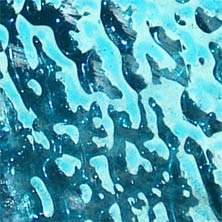 Muff Glass
Muff Glass
Muff Glass, sometimes called Venetian Glass or Water Glass, was made in small sheets, using centuries old techniques. A “gather” of molten glass was blown into a bubble using a blow-pipe and the lung power of the glass blower. The bubble was suspended below the blowpipe and swung in a circular motion, allowing gravity to elongate the bubble into a cylinder shape, called a “Muff.” After the glass cooled slightly, the top and bottom were cut off with metal glass shears, leaving an open cylinder standing on edge.
This cylinder was slowly cooled or annealed over time in a temperature-controlled annealing room. Then the hardened tube of glass was scored from the inside with a diamond-like cutter to make a straight crack from end to end. After heating the piece to about nine hundred degrees in a kiln, the cylinder was opened up along the crack line, then flattened into a sheet. The reason that muff glass has its beautiful translucency is because it was never placed upon a kiln shelf while in its molten form. Most other glass is cooled lying flat on a shelf inside a kiln. The surface of the shelf leaves a texture on a sheet of glass, called shelf texture or “shelf marks,” which diminish its translucency.
Muff was used in better quality residential windows in America for only a brief period, from the early 1880’s until the end of the century. I am able to remember owning just one window made after 1900 displaying any Muff. The textures tended to be vary from sheet to sheet, and often within any given sheet. The surface texture might flow in gentle undulations, as you might see on the surface of a pond. Some sheets have varying patterns of bumps and/or dimples. Muff came all hues, from clear to deep ruby, each one being richly translucent.
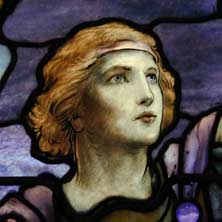 Painted Glass
Painted Glass
Examples of painted glass windows from the eleventh century are preserved
in the Augsburg Cathedral in German. Glass painting is the original decorative
technique for windows, and the process has not changed drastically through
the centuries . Painting involves a good deal of steps. The earliest paint,
a dark brown vitreous enamel, was used for everything from dark lines to
the subtle shading of hands and faces. This iron oxide and powdered glass
paint was employed not only to decorate glass, but it served to control
amounts of light passage through any given window. It can be applied with
a wide variety of brush choices, then, depending on the effects sought,
may be be worked with other tools, some made of bone or horn. The list
of techniques seems endless. The painted glass panes must be fired in a
kiln at 1250 degrees Fahrenheit to fuse the enamel to the glass.
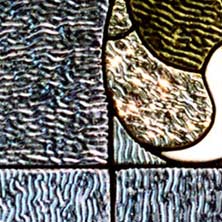 Rippled Glass
Rippled Glass
This is one of the most easily recognized forms of textured material, having
ridges across the complete surface of one side of the glass. The ridges
appear somewhat uniform and parallel to each other when viewed in small
pieces, but across larger spans it is normal to see pronounced differences
in size, spacing and directionality of the “ripples.” The complicated
rippled patterns on any given sheet, especially a hand-rolled sheet, is
concievably as individual as the wave pattern on a busy lake. Some cut
pieces may display tight, deep ripples while other pieces from the same
sheet will have low-slung, irregular ripples. The tightest of all the rippled
glass patterns is called French Ripple, even though I have never seen any
of it that was not American made. It is rare to find, it is invariably
hand-rolled and it is usually quite delightful.
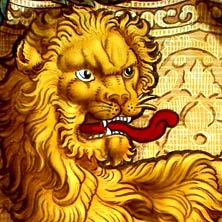 Silver
Stain (stained glass)
Silver
Stain (stained glass)
Silver compound, usually silver nitrate, which when fused to glass in a kiln
produces colors from pale yellow to deep orange. It is applied to glass on
the opposite side from any painted detail and it is usually fired separately
at the lower temperature of 1100 degrees. The results are weatherproof and
durable over time. The process was introduced in about 1300. Silver stain
is the basis for the term “stained glass.”
 Venetian Glass
Venetian Glass
See Muff Glass.
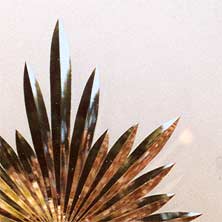 Wheel-Cutting
Wheel-Cutting
An incising technique where the surface of any piece of glass
is abraded with rotating copper (and sometimes stone) wheels. This involved
hand holding each piece, so a steady craftsman was needed. The incising was
polished with finer and finer wheels of different materials, along with wet
polishing compound, to make brilliant and often intricate patterns.
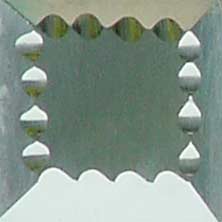 Zipper-Cut Glass
Zipper-Cut Glass
Zipper Cutting encompasses a variety of decorative techniques where a skilled
beveled glass maker grinds and polishes a
pattern of notches on the exposed edge(s) of specific beveled pieces in
a window. The notchings, when closely grouped, resemble a zipper.
Usually the “zippered” pieces form an independent design pattern,
tracing throughout, and greatly enhancing a window. Just as there is a
variety of zippering patterns, there is a variety of notching profiles,
from sharply-angled “V” grooves to shallow dish-shaped “scallop cuts.”
